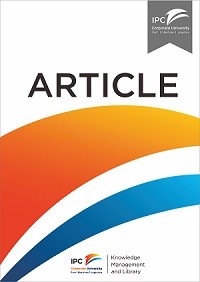Book
PORT OPERATIONS, PLANNING AND LOGISTICS
Ports are critical infrastructure resources and serve a key role in the transportation of freight and people. With more than 80% of international trade by volume being carried by sea, ports are vital for seaborne trade and international commerce. Ports are the critical nodal interfaces where maritime transport connects
with other modes of tra sport and where trading, distribution and logistics activities can take place. Efficient port operations significantly lower maritime and trade costs whereas delays in ports impose costs on logistics and
supply chains through the cost of warehousing and inventory. Ports also serve as economic catalysts for the markets and regions they serve, where the aggregation of port services and activities generates socio-economic wealth and benefits. There are no confirmed statistics on the number of ports in the world. Some sources estimate the total figure to vary between 2,000 and 30,000 ports and terminal facilities. In 2008, it was estimated that world ports handled over 8 billion tons of international seaborne trade of goods loaded (UNCTAD, 2008). Because of trade imbalances, transhipment practices and other operational considerations, the global port throughput and handling activity would have exceeded the volume of seaborne trade. For instance, 143 million twenty-foot equivalent units (TEUs) were handled by world ports and terminals for an estimated 1.24 billion tons of global container trade in 2007 (UNCTAD, 2008). A port can range from a small quay for berthing a ship to a very large-scale centre with many terminals and a cluster of industries and services. Ports are dissimilar in their assets, operations, roles and functions, and even within a single port the activities and services performed are, or could be, broad in scope and nature. This situation has led to a variety of operational, management, organisational and institutional approaches to ports, and it is almost impossible to find a worldwide uniform definition for them. There is indeed a variety of terms describing ports such as interfaces between sea and land, nodes in the multimodal and inter-modal transport network, distribution and logistics centres, maritime gateways and corridors, distriparks and maritime clusters, and free zones and trading hubs.
Ketersediaan
Informasi Detail
- Judul Seri
-
LLOYD’S PRACTICAL SHIPPING GUIDES
- No. Panggil
-
TXT MG BIC p
- Penerbit
- New York : Routledge., 2009
- Deskripsi Fisik
-
383p
- Bahasa
-
English
- ISBN/ISSN
-
13: 978-1-843-11805-
- Klasifikasi
-
MG
- Tipe Isi
-
-
- Tipe Media
-
-
- Tipe Pembawa
-
online resource
- Edisi
-
2009
- Subjek
- Info Detail Spesifik
-
-
- Pernyataan Tanggungjawab
-
KHALID BICHOU
Versi lain/terkait
Lampiran Berkas
Komentar
Anda harus masuk sebelum memberikan komentar

 Karya Umum
Karya Umum  Filsafat
Filsafat  Agama
Agama  Ilmu-ilmu Sosial
Ilmu-ilmu Sosial  Bahasa
Bahasa  Ilmu-ilmu Murni
Ilmu-ilmu Murni  Ilmu-ilmu Terapan
Ilmu-ilmu Terapan  Kesenian, Hiburan, dan Olahraga
Kesenian, Hiburan, dan Olahraga  Kesusastraan
Kesusastraan  Geografi dan Sejarah
Geografi dan Sejarah